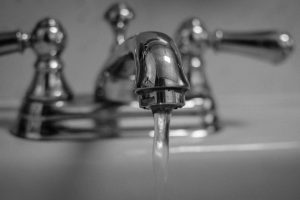 Dear EarthTalk: I recently moved into a new rental house and the water from the tap tastes kinda funny. Can you suggest some easy and inexpensive ways to test the water for contaminants? — Wanda Belinski, Bridgeport, CT
Dear EarthTalk: I recently moved into a new rental house and the water from the tap tastes kinda funny. Can you suggest some easy and inexpensive ways to test the water for contaminants? — Wanda Belinski, Bridgeport, CT
Chances are your tap water is fine—a recent survey of public data by the non-profit Natural Resources Defense Council (NRDC) found that 95 percent of the U.S. population lives in areas without any past or present water contamination issues—but of course it can’t hurt to check. According to the U.S. Environmental Protection Agency (EPA), most of us get our water from a community/public water system that provides its customers with an annual water quality report, also known as a Consumer Confidence Report. Typically this report comes out once a year—often with your July water bill. These reports contain information on contaminants in the system and in the water’s source—and what the potential health effects could be. Your water utility should be able to provide this report on request as well.
If your water provider’s report doesn’t bring you solace, or if you are suspicious about the water pipes into your house, you can order a home water test kit and analyze for common contaminants yourself. National Testing Laboratories (NTL) is one of many companies that will mail you a complete test kit which you can use to test for various contaminants. NTL’s basic kit to evaluate water from your public water supply retails for under $150 and tests for the most common contaminants in public water supplies, including five metals and minerals such as copper and lead, seven inorganic chemicals including fluoride and nitrates, four physical characteristics including pH and hardness and 16 disinfectants and disinfection by-products including chlorine, trihalomethanes and haloacetic acids. Meanwhile, NTL’s deluxe option costs another $100 but includes tests for dozens of additional contaminants including arsenic, mercury, benzene, MTBE and even Glysophate (RoundUp).
If you are one of the 15 percent of the U.S. population deriving their water from a private supply, such as from a well on your property or a common source shared by a small neighborhood, it behooves you to test your supply on an annual basis (or more frequently if you have a new well or recently replaced or repaired pipes, pumps or well casings) to watch out for coliform bacteria, nitrates, total dissolved solids and unhealthy pH levels. Your local health agency can refer you to testing labs in your area that can provide sample containers or even come out to your property to take their own samples, or firms like National Testing Laboratories can mail well water test kits your way.
If your water supply is contaminated, contact your city, town or county health agency to find out what you can do to remedy the situation—and in the meantime, boil any water you intend to drink, or get bottled water. If you are on a public water supply, chances are your home isn’t the only one affected, so band together with neighbors and demand your water utility clean up its act. The silver lining to the Flint, Michigan water debacle is that Americans no longer take for granted that their water supplies are safe. Hopefully that will translate into more public vigilance regarding end-of-the-faucet monitoring of our precious water.
CONTACTS: NRDC’s What’s in Your Water,” www.nrdc.org/resources/whats-your-water-flint-and-beyond; National Testing Laboratories, www.watercheck.com; EPA Ground Water & Drinking Water, www.epa.gov/ground-water-and-drinking-water.
EarthTalk is produced by Roddy Scheer & Doug Moss and is a registered trademark of the nonprofit Earth Action Network. To donate, visit www.earthtalk.org. Send questions to: question@earthtalk.org.




